10 pieces of product information every product detail page needs
January 16, 2023A great product detail page gives users all the information they need to feel confident about their purchase decision. Here are 10 kinds of product information that make your product detail pages work harder.
Before the pandemic, in-store shopping beat online shopping by 55% to 45% as consumers’ preferred way to buy. But after two years of Covid-era digital disruption, those figures have flipped; today, 57% of consumers prefer to shop the digital shelf.
That means winning the digital shelf should be a top strategic priority for brands in 2023. The digital shelf offers brands a unique opportunity to put products in front of consumers exactly when they’re looking for them. That’s a double win for brands because it influences both brand awareness and sales.
Winning the digital shelf can boost sales in brick-and-mortar stores, too. A whopping 65% of shoppers compare products and prices on their smartphones while shopping in the store—and 51% will buy another product, or from a different store because of information they discovered on the digital shelf.
So, how do you amp up your product detail pages? It all starts with the right product information. Product content bridges the gap between the digital shelf and the brick-and-mortar store, where customers can physically interact with your products. A great product detail page gives users all the information they need—in a straightforward, intuitive way—to feel confident about their purchase decision.
Here are 10 kinds of product information that make your product detail pages work harder.
1. A descriptive, keyword-rich product name
What’s in a name? More than you think, especially when it comes to e-commerce. Naming things for the web is more than just labeling your products—it encompasses discovering, attracting, and selling. And since every word is a potential search term, product names should be as accurate and descriptive as possible.
A few things to keep in mind:
- Know your customer: Always approach product names from the viewpoint of the person it’s intended for. Descriptors for a child’s product would be very different from those intended for adults. Don’t forget localization: a product sold in the US might use inches in the name, but the same product in Europe would use metric measures.
- Keep SEO top of mind: Product names often double as URLs, link text, and title tags, so consider your SEO strategy when you craft product names. Consider the words and phrases customers might use to search for your product and include them whenever you can.
- Mention specific details and characteristics: This is especially important in industries like apparel, electronics, and home furnishings, where details like materials, colors, and compatibility are essential differentiators.
- Front-load important words: Although Google allows 255 characters, only the first 70 show in a search result, so ensure the essential product information appears in the first few words.
- Go easy on the jargon: It’s good to include proprietary names that people associate with your brand, but there’s a fine line between brand terms and jargon. For example, not everyone might know the Bose QuietComfort 35 without the words “noise-canceling headphones” in the product name. So, if you include branded terms, be sure to add a more generic one that all consumers will understand.
2. A customer-centric product description
Product descriptions should speak directly to your customers—their needs and desires, pain points, and questions about how your product fits into their lives. Content that does a great job of addressing them stands the best chance of converting.
SEO should always be a consideration in your product content, but keyword stuffing is never a good idea. Tell your product story first and use relevant search terms only where they add to your story.
Of course, great storytelling only works if your product information is complete and absolutely accurate. Don’t leave out essential elements your customers need to make a decision, and don’t mislead them with exaggerated claims or inconsistent information. Make sure customers have the same experience with your products no matter where they encounter them.
Don’t overlook the value of aspirational content in your product descriptions. In e-commerce today, it’s all about making an emotional connection: How do your products fit into their lifestyles? How do they make your users’ lives better, more fun, or more enjoyable?
3. Great product photography
One of the biggest challenges in e-commerce is that your customers can’t see, touch, or try your products in real life before they buy. Besides being your main attention-grabbing asset, product photography does the heavy lifting when helping them understand what your products actually are.
Invest in high-quality photos of your product from every angle; include images of people using your product whenever possible. Keep your photography consistent with your brand. If your brand ethos is simple and modern, your photography should be, too.
Remember that product photos don’t just live on your product pages. They show up all over the web—search results, social media, and third-party review sites, to name just a few. So, make sure they show your products in the best possible light.
Bonus: Search engines love to surface photos with their search results. Great product photos can improve your search rankings and level up your brand awareness.
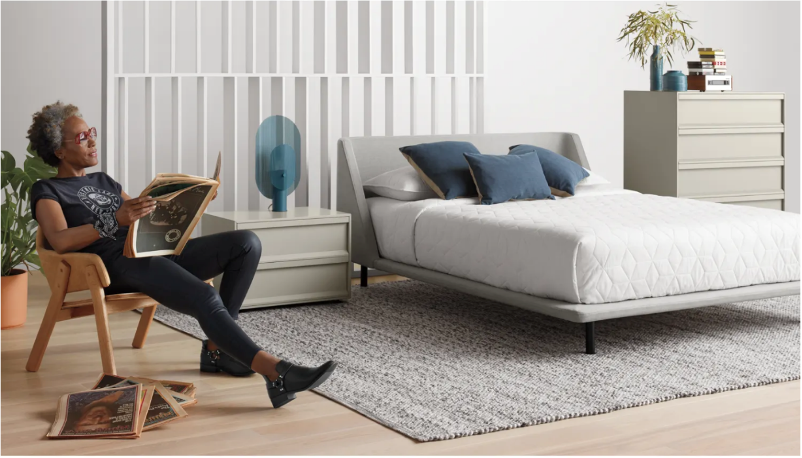
4. Product videos
Producing videos is expensive and complicated, but that doesn’t mean you shouldn’t do it. Why? Check out these stats:
- Consumers who watch a product video are 73% more likely to buy
- 71% of consumers prefer video content over all other types of product content
- 55% of consumers use product videos to make a purchase decision
Video can do more than just show your product in a more human way; it can be strategically employed to overcome pain points on the path to purchase. For example, a how-to video showing how to set up a new home theater system reassures consumers that the process won’t be too difficult for them.
If your products are customized and made to order, a video showing them how to measure for a perfect fit helps avoid returns and exchanges.
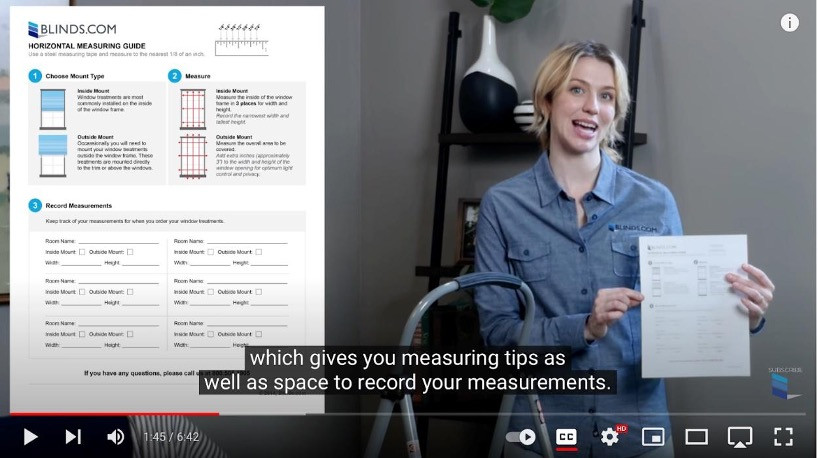
5. Product comparisons
Consumers love to compare different products, but they hate clicking back and forth between multiple open tabs to do so. A product comparison chart dramatically simplifies the process and helps customers choose the best item that meets their needs.
This is especially helpful for brands that sell multiple versions of the same product. A well-thought-out chart on each product detail page shows consumers how different features stack up and suggest which product is best for different types of users.
Comparisons are especially effective for consumer electronics when similar products have different price points based on features that aren’t always visible on visual inspection.
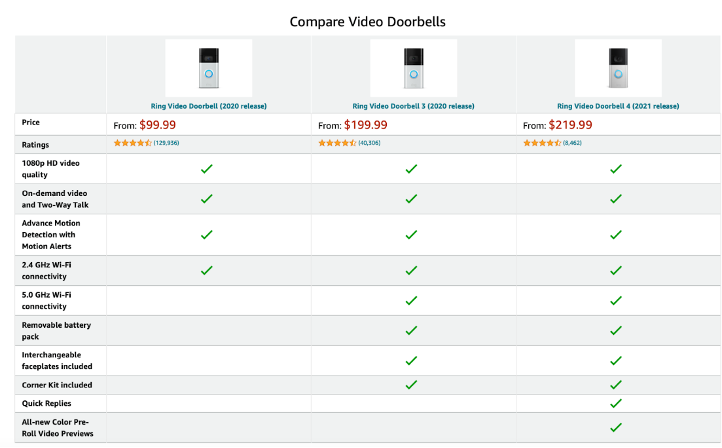
6. AR/VR product visualization tools
AR/VR tools are the next big thing in e-commerce—and with good reason. They create memorable customer experiences that save people from guessing about whether the product will work for their needs. It helps them test out your products and try-before-they-buy, increasing their confidence and reducing the risk of returns.
Augmented reality visualization tools have really taken off in the apparel and home furnishings industries. According to recent survey data, 32% of shoppers use VR visualization tools on e-commerce sites, and 73% of smartphone users are happy with the experience. And adding 3D configuration and augmented reality to your product information management platform can help increase conversions by 40%.
7. Personalized product recommendations
In a brick-and-mortar store, helpful sales assistants increase AOV by recommending complementary products. E-commerce brands can get a similar lift with personalized product recommendations.
AI-driven product recommendation engines use algorithms to personalize the shopping experience by showing users other products they might be interested in. This can be based on browsing and purchase history, best-selling or trending products, or a combination of the two. Think, “Other people who bought this item were also interested in this.”
However you approach it, the results are the same:
- Better engagement: Engaged visitors stay on your site longer, reducing your bounce rate and improving your search rankings.
- Higher conversion rates: Research shows shoppers who engage with a recommended product had a 70% higher conversion rate during that session.
- More revenue: According to recent data, product recommendations account for about 30% of an e-commerce store’s revenue. Amazon’s recommendation engine generates a whopping 35% of its revenue.
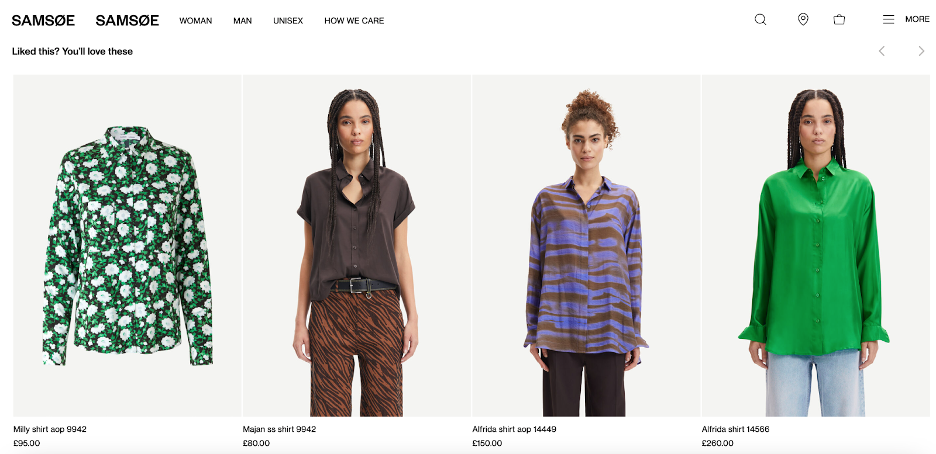
Read the case study to see how inriver PIM helped Samsöe Samsöe improve its customer experience and scale its business internationally.
8. Social proof/UGC
Product reviews are table stakes when it comes to e-commerce. Consumers probably won’t believe everything you say about your products, but you can bet they’re paying attention to what others say.
But brands who incorporate user-generated content and social proof turbocharge their product pages and increase conversion rates by as much as 300%. It works like magic when building long-term trust and brand loyalty. And it doesn’t hurt that it boosts your search rankings, too.

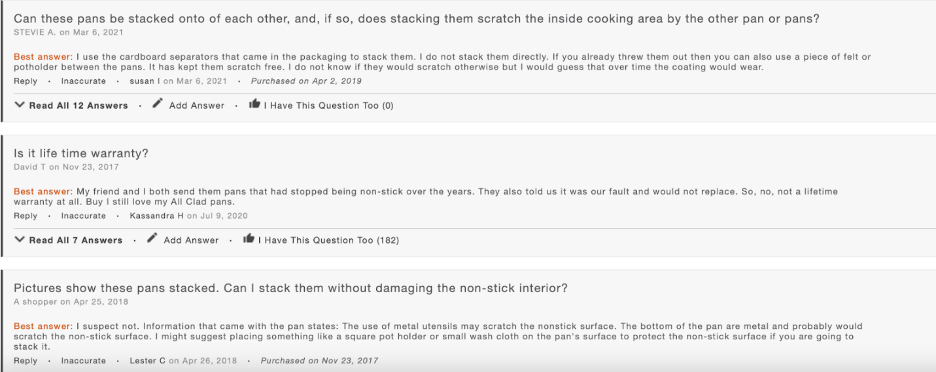
9. Sustainability information
Green is the new black for e-commerce brands. Our inriver research shows that nearly two-thirds of 25- to 44-year-old shoppers consider sustainability information essential to their purchase decision, and just 18% of all shoppers considered it unimportant.
Today’s sustainability shoppers are looking for details, not greenwashing platitudes. Be sure you highlight your green credentials on the digital shelf with the information these shoppers look for:
- Materials and sourcing
- Sustainable packaging
- Fair trade and ethical practices
- Product origins
- Shipping and transportation types
Green shoppers also prize longevity—they’re looking for sustainable ways to extend a product’s lifecycle. Help them with troubleshooting tips, part numbers for easy repairs, and even ways to recycle their products and reduce the number of goods taken to the landfill each year.
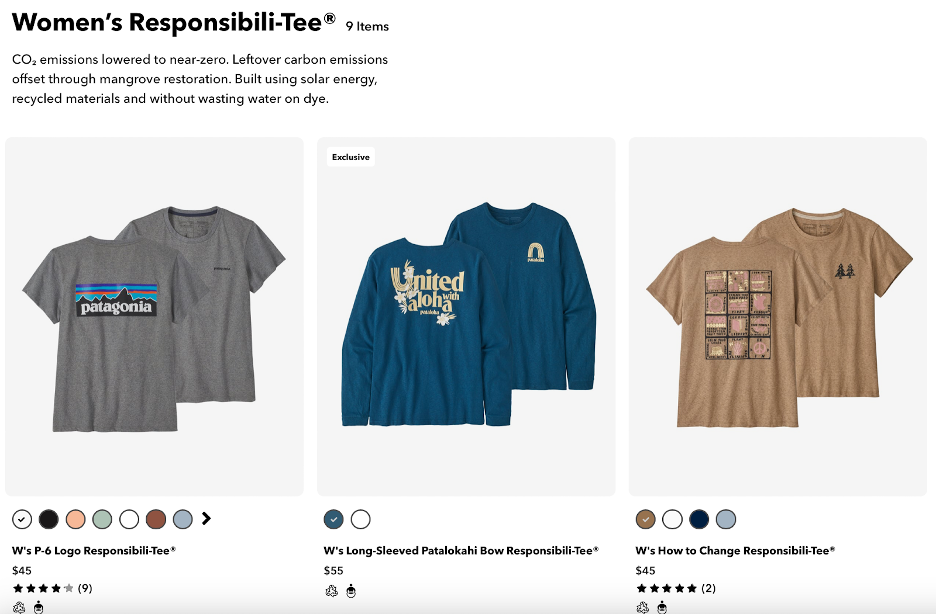
10. Product availability, shipping, and returns
Nothing turns a customer against your brand faster than missed expectations. It’s your responsibility to set them accurately upfront. Let shoppers know right away if the product they want is in stock and when they can expect to receive it. Integrating PIM with your warehouse and logistics management system keeps your product availability data accurate and up-to-date, so you don’t disappoint your customers.
Read our case study to see how inriver PIM helped Intersport Sverige AB manage its availability for in- and out-of-season product assortments.
If you have multiple shipping options, present them transparently. Build trust in your brand with accurate shipping estimates showing the full purchase cost. If you offer free shipping at a certain order value, promote it and use it as an opportunity to cross-sell.
According to FedEx, 80% of online shoppers abandon their cart if they aren’t offered free shipping or a free shipping threshold. The good news is that 83% are willing to wait two additional days for their items to get free shipping, so it’s easier to find economical shipping partners to make the math work.
And don’t forget to reassure shoppers with the terms of your return policy in case the item doesn’t work out. Remember, 66% of shoppers check your return policy before they make a purchase, and 81% say that easy returns make it more likely they will buy.
Bonus tip: Use product availability to boost your social proof. If a product is low in stock, highlight that fact. It adds a sense of urgency and reinforces the idea that the item they want is in high demand.
What makes a great product detail page?
It’s not enough to combine these elements and call it a day. A great product page starts with understanding your customers and then creating content that brings your products to life in a way that speaks to their unique needs.
PIM makes it easy to tell compelling product stories by providing a single source of truth for all your product content, allowing you to enrich it across all your touchpoints easily. Reach out to learn more about how inriver PIM can help you create great product detail pages and win the digital shelf.
you may also be interested in…
author
Joakim Gavelin
Senior Principal Advisor
Joakim has over 25 years experience in people, sales and business management, helping brands and business increase their presence, sales and profit. With deep knowledge in retail sales and intelligence to consumer behavior to global sales, he is familiar with both B2C and B2B - no matter the size, industry or location of company.
Read more